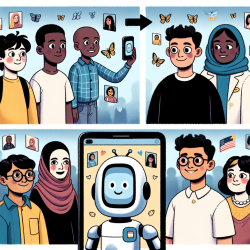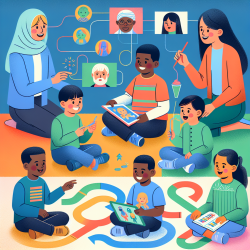Improving Suicide Prevention Skills Through Gatekeeper Trainings
Suicide rates among American Indian/Alaska Native (AI/AN) youth are alarmingly high, being 2.5 times higher than the national average (CDC, 2022). Addressing this crisis requires tailored and effective suicide prevention programs. A recent study titled Evaluating the Effectiveness of Suicide Prevention Gatekeeper Trainings as Part of an American Indian/Alaska Native Youth Suicide Prevention Program sheds light on how gatekeeper trainings can be instrumental in this endeavor.
Key Findings from the Research
The study evaluated two types of gatekeeper trainings: Applied Suicide Intervention Skills Training (ASIST) and Suicide Alertness for Everyone (SafeTALK). Both trainings are designed to equip individuals with the knowledge and skills to respond to youth at risk of suicide. The study involved pre-, post-, and six-month follow-up surveys to measure the effectiveness of these trainings.
- Short-Term Gains: Both ASIST and SafeTALK showed significant improvements in participants' knowledge, preparedness, and comfort levels immediately after the training.
- Long-Term Retention: SafeTALK demonstrated better long-term retention of skills compared to ASIST, particularly in maintaining comfort levels in addressing suicide.
- Educational Background: Participants with less education showed the most improvement and better retention of training content over time. Those with higher education levels had higher baseline scores but did not show as much improvement.
Implications for Practitioners
For practitioners working with AI/AN youth, these findings offer valuable insights:
- Tailored Training: Given that individuals with less education benefited the most, it may be beneficial to start with introductory trainings like SafeTALK before progressing to more in-depth sessions like ASIST.
- Cultural Relevance: Incorporating culturally specific elements into the training can enhance its effectiveness. For example, using AI/AN characters and cultural norms in training scenarios can make the content more relatable and impactful.
- Ongoing Support: Consider implementing follow-up sessions or booster trainings to reinforce the skills learned. Programs like "Gathering of Native Americans" (GONA) or Native H.O.P.E. can serve as effective follow-up interventions.
Encouraging Further Research
While this study provides a strong foundation, there is a need for further research to explore the long-term efficacy of different training types and their impact on various demographic groups. Future studies should focus on:
- Mix-and-Match Approaches: Evaluating whether combining different types of suicide prevention education can enhance skill retention and confidence.
- Engaging Young People: Developing strategies to involve young people and those with less education in suicide prevention efforts to maximize community benefits.
- Cultural Competency: Investigating the impact of culturally tailored approaches on AI/AN-specific engagement and suicide prevention outcomes.
Practitioners are encouraged to stay updated on the latest research and continuously seek opportunities for professional development. Implementing evidence-based practices and tailoring interventions to meet the unique needs of AI/AN youth can make a significant difference in preventing suicide and promoting mental wellness.
To read the original research paper, please follow this link: Evaluating the Effectiveness of Suicide Prevention Gatekeeper Trainings as Part of an American Indian/Alaska Native Youth Suicide Prevention Program.










